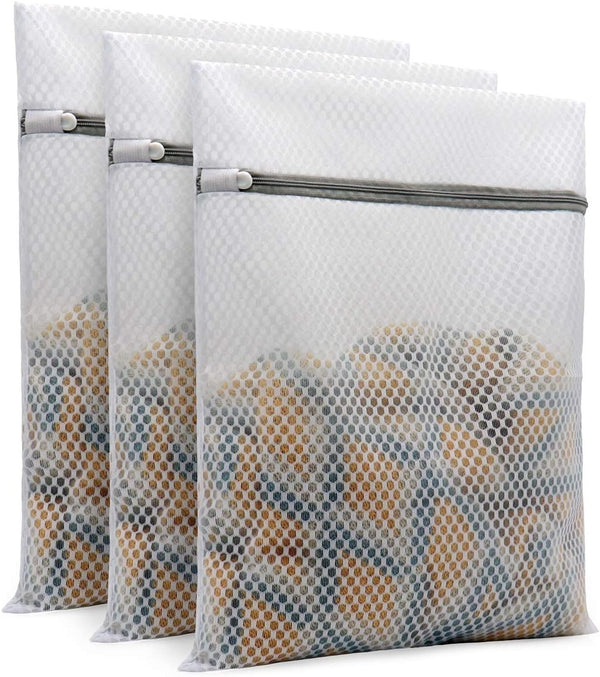Empty Every Pocket
Before washing, clear out all pockets of any items such as queen cages, beeswax pieces, coins, hive tools, papers, or debris. Beeswax melts at around 145°F, so avoid exposing your suit to excessive heat that could cause wax to melt and damage your washing machine.
Using safety pins to secure zippers can also help protect your suit during the wash cycle.
Detach the Veil from the Suit or Jacket
If your veil can be removed, unzip it carefully from the main body of the suit. Veils, especially fencing-style ones, are delicate and benefit from extra care. Using a mesh laundry bag or a tied pillowcase can protect them during washing. Round veils are best hand-washed to avoid damaging the brim.
Since veils are mostly mesh, machine washing without removal can cause tears from agitation. Avoid discovering holes mid-inspection by removing the veil beforehand.
Taking photos or videos before removal can help you remember how to reattach the veil correctly.
Pre-Treat Any Stubborn Stains
Pre-treating stains on your bee suit helps improve cleaning results. Apply a stain remover or even toothpaste on spots like propolis stains, then rinse before machine washing. For best results, use a pre-soak by soaking the suit in warm water with detergent or stain remover to help loosen dirt and odors before the main wash cycle. While propolis stains may not disappear completely, pre-treatment softens them significantly.






